One note: The European fire ant (Myrmica rubra) is not the same as the Southern fire ant (Solenopsis invicta) that plagues the southeastern United States (stand on the grass anywhere in New Orleans and this ant will introduce itself). Given the heat needs of the Southern fire ant, we would not expect it anywhere near British Columbia. It has been suggested that the European fire ant be called the 'ruby ant' to avoid this confusion but the term has not really caught on yet.
What is most characteristic of this ant is its tendency to rapidly swarm and readily sting when its nest is disturbed. The sting has been characterized as similiar to stinging nettle, which I would agree with. Some, however, react more seriously to the sting and develop significant swelling at the sting site. While some other ants in British Columbia can sting (many of our more common ants lack a stinger altogether), this is the only ant that seems inclined to do so. I must also distinguish here between stinging and biting. Many types of ants will bite although few are large enough for it to be really noticeable.
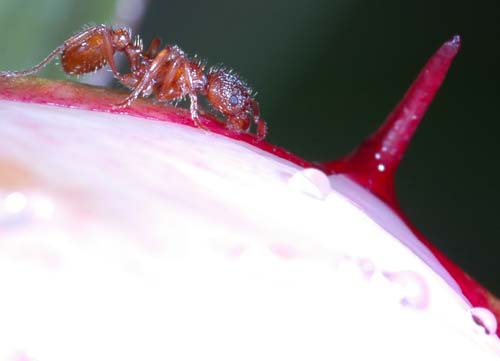
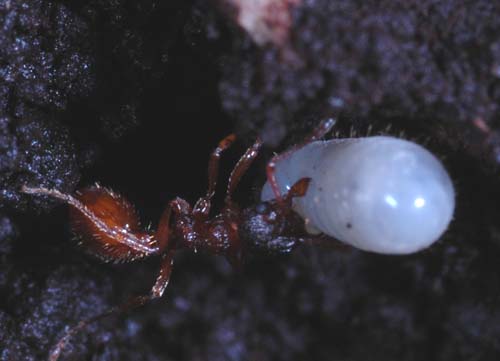
As shown above, the European fire ant is reddish in colour although the head may be darker in some individuals. They nest in lawns and raised garden beds, often (but not always) under some object such as a rock. They can also be found within wood debris.
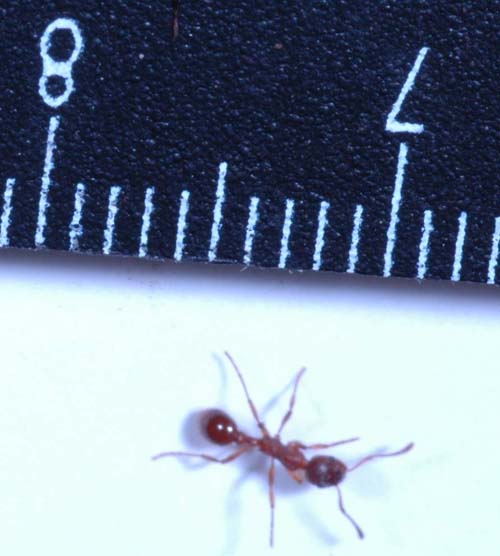
They are fairly small, perhaps 4-5 mm as shown below.

European fire ant colonies do not form obvious above ground mounds. In the picture above, each flag and lawn ornament is marking a fire ant colony.
Photo Credit: Susan Horton

Here we see a close up of a mound in grass. Usually there is just a small amount of disturbed soil, perhaps 10-15 cm across. You don't notice these until you stand on one.
Photo Credit: Susan Horton
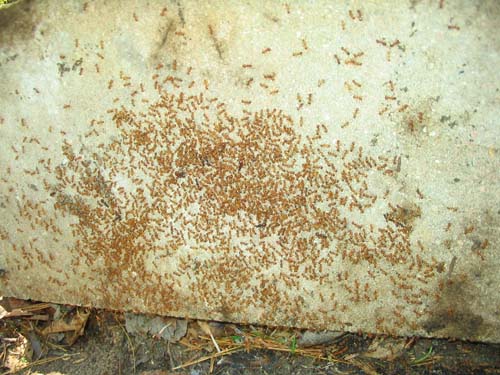
This ant loves heat and moisture. Paving stones, wood on the ground, lawn ornaments or lawn clutter all trap moisture against the soil and gain heat over the day that is released at night. The photo above is a lifted paving stone. You might notice some larger ants in the photo above. Those are queens. This ant has multiple queens and if my count is right, there are 12 in the photo.
Photo credit: Susan Horton
To sum up, if the ants are mostly uniformly reddish, are nesting in lawns or raised garden beds, and readily swarm when disturbed, there is a reasonable probability that you are dealing with the European fire ant.
Below are two ants you might confuse with the European fire ant.
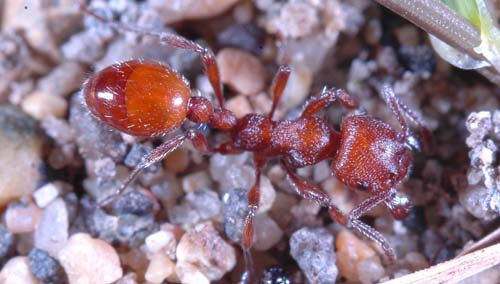
Manica invidia
This ant is only known by its latin name, Manica invidia. It is similiar in colour to the European fire ant but is larger (around 6-7 mm). Interestingly this ant may also be an invasive but records are uncertain. What is most characteristic of this ant is that it nests in very compacted soils (driveways, schoolyards, gravel roads, parking lots, railroad beds, walking trails). It is slow moving and does not show any tendency to swarm. Thus behaviourally, it is nothing like the European fire ant. It does have a sting but I have never been stung by one of these ants.
There is no reason to be concerned about these ants.
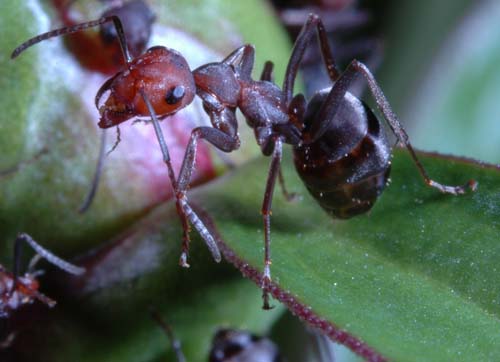
Thatching ants
This is a thatching ant (its latin name is Formica ravida ). There are many species related to this ant in two species groups. Most complaints from homeowners, about ants outdoors, come from this ant. It is large (around 8 mm), common, and can be aggressive and will bite if it finds a suitable location. However, encounters with this ant are usually with only one or a few. Further, it normally has a reddish mid-section (and sometimes head) with a dark abdomen (belly), unlike the European fire ant. It lacks a stinger and often forms large mounds made of thatch.
These ants have many excellent roles to play in the environment, especially removing pests such as spruce budworm, and should be left alone unless the problem is severe.
Return to the European fire ant homepage
Return to Rob's Ants of BC homepage